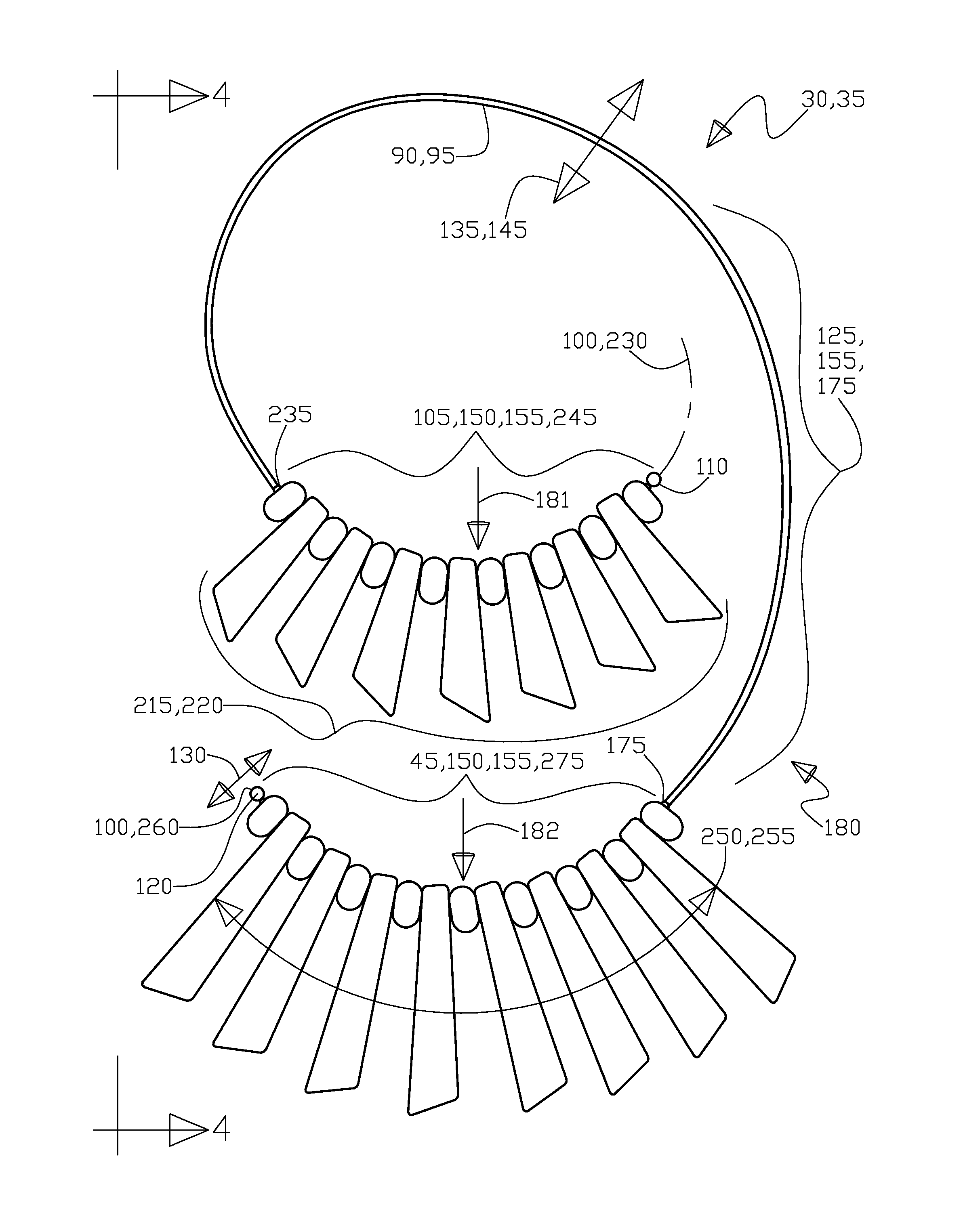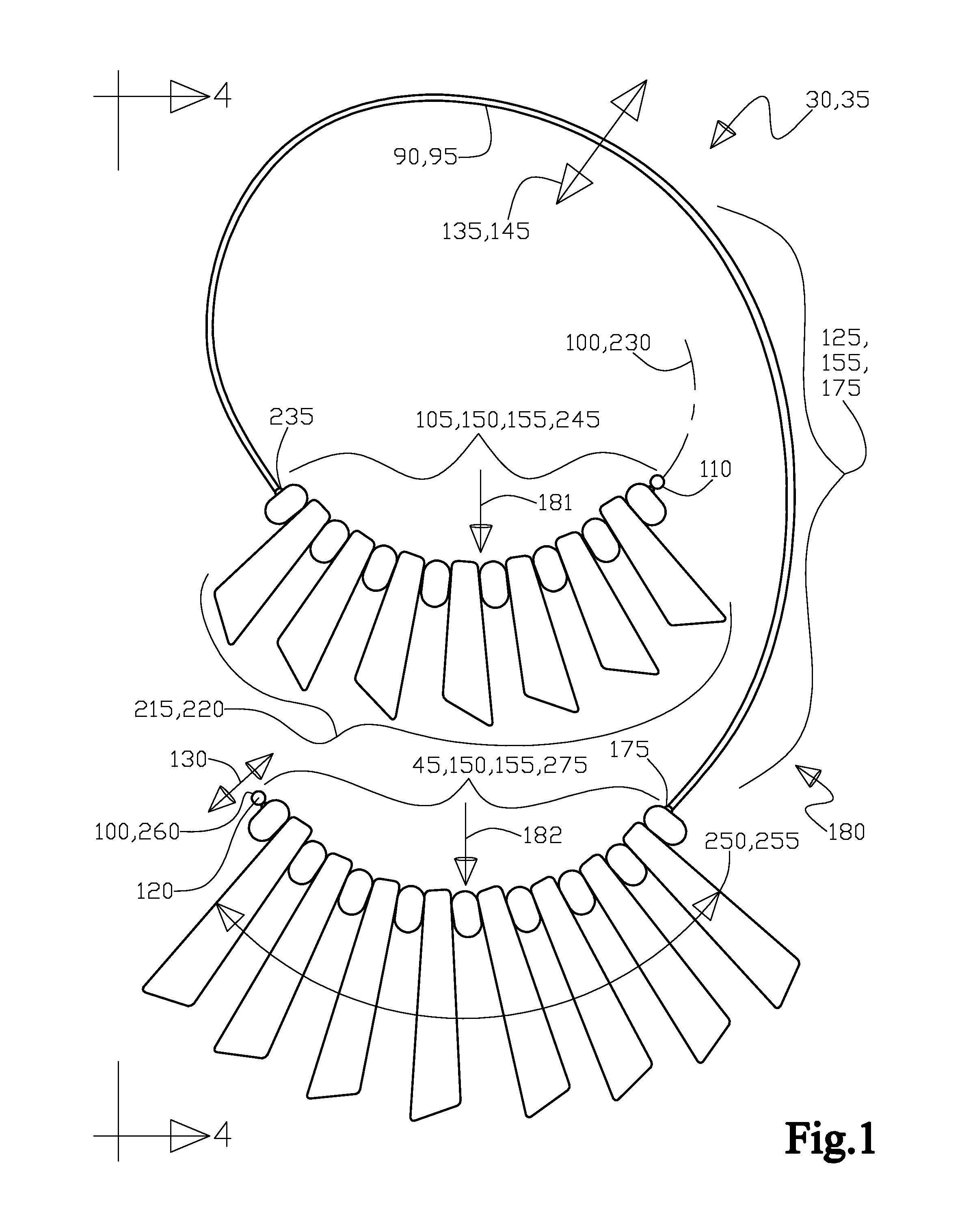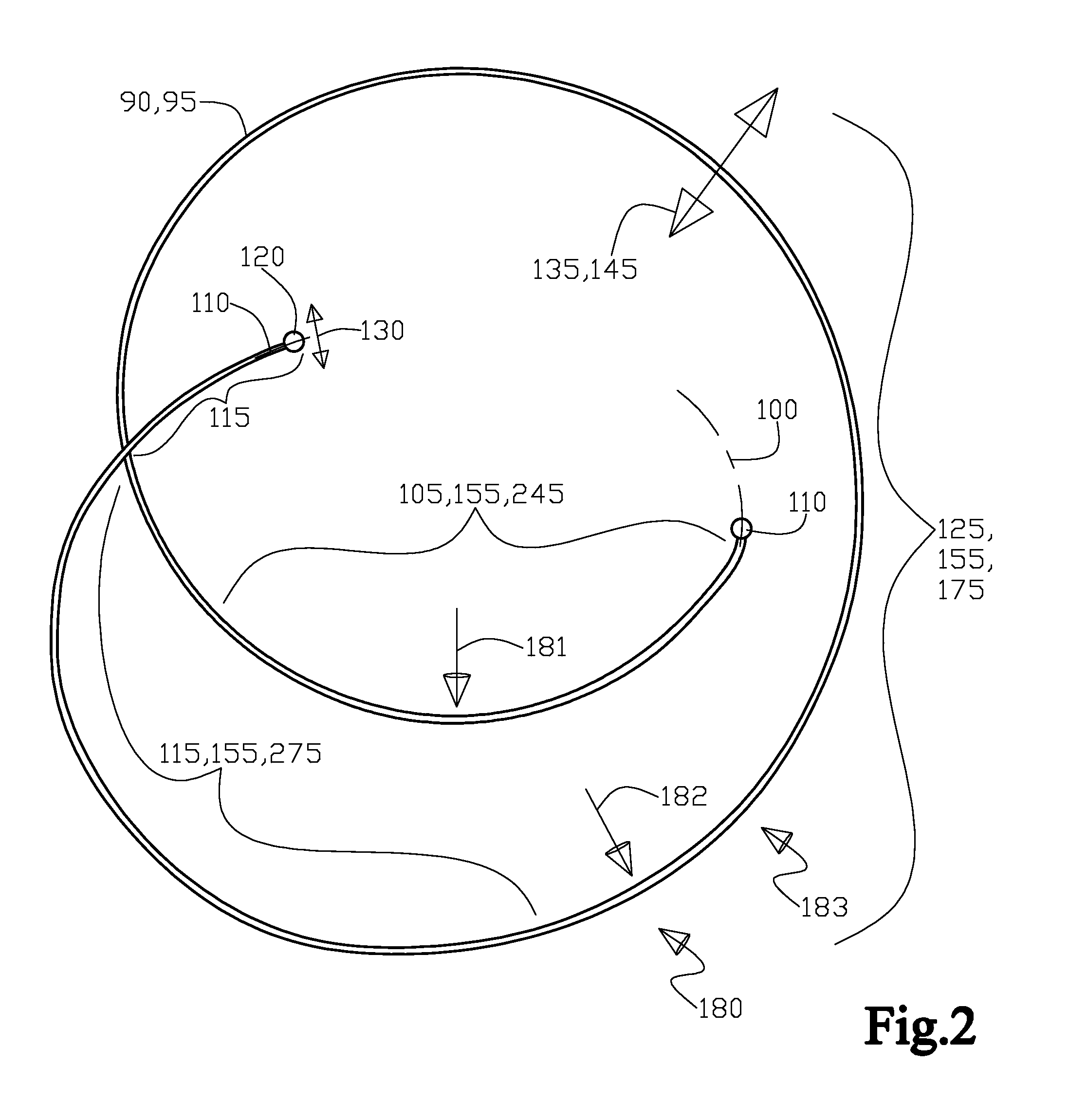The necklace clasp fasteners can be very tiny and difficult to utilize without the aid of either a mirror or another person's assistance.
Such that in the absence of another person's assistance, such people will be left unable to wear their desired jewelry.
The necklace clasp fasteners also cause additional problems, as the clasp-style fasteners can break or become stuck, rendering the necklace unable to be worn without repair.
As the clasps tend to be extremely small for the purpose of not being visually obvious, are often difficult to manage for even the most dexterous persons, especially if they lack the benefit of long fingernails to aid in opening and closing the clasp.
In addition, these clasps also have tiny parts that stick out and may rub on the back of the person's neck causing discomfort and chaffing and utilizing a larger clasp with smoother connecting parts is not necessarily a feasible solution, as it would likely destroy the aesthetic appeal of the necklace.
Necklaces can also fasten around a person's neck by tying two elements together, however this too causes problems.
Should the elements be tied too loosely, they may untie on their own and the necklace may slip off unbeknownst to the person wearing it, and if they are tied too tightly, the necklace may be very difficult to remove.
Additionally, because necklaces most typically encircle the neck, should they be grabbed by another person or caught on an object, damage may occur to the jewelry itself or the person wearing it could be injured.
A woman walking down the street might have her necklace grabbed from behind by a mugger and depending on the durability of the material the necklace is made out of, could suffer great injury to her neck if it does not easily slide off or break.
In another situation a child could fall and catch her necklace on a protruding object, strangling or injuring herself or destroying the necklace entirely.
In yet another situation a woman shredding documents in an office might lean too far over the shredder and catch her long necklace between the blades and if the necklace is strong enough, it will neither break nor slide quickly off, endangering the woman's safety, and leading to potential strangulation or
neck injury.
With necklaces consisting of a pendant on a chain or wire, or simply a bare chain and clasp, it is almost inevitable that the clasp or fastener will eventually slide around to the front where it does not belong requiring the person wearing it to readjust the necklace, as the clasp will typically have more mass (weight) than its adjacent chain portion, thus by virtue of the person having
neck movement while wearing the necklace, the clasp will tend to undesirably gravitate to the bottom front of the person wearing it from the normal starting position of the clasp at the rear of the neck at the highest point (being the most hidden position for the clasp).
This frequent readjustment demands vigilance from the person wearing the necklace, and may even lead to self-
consciousness.
This same problem exists to a greater degree of annoyance in necklaces that are more fixed in design.
If the masses of the design are not properly balanced, one mass may constantly pull downwards, causing other masses or elements to be pulled behind the neck and hidden from view, destroying the aesthetic appeal, and causing additional annoyance and hassle.
However, problems still remain, in the area of personal safety, and damage to, or complete destruction of the jewelry are still concerns should the necklace be grabbed from behind, or become caught on another object.
Also, ease of use is still a concern for children, the elderly, and persons with reduced dexterity or eyesight; and aesthetic concerns may still arise from improperly balanced masses as previously described.
Furthermore, one can imagine the annoyance and discomfort caused if the more flexible shoulder rests Fossas discloses in FIGS. 2B or 4 were to slide off of the person's shoulders.
While Strong allows for easy
assembly and disassembly, like Fossas, the problem of the possibility of damage to the jewelry or injury to the person wearing it still exists.
Also, like Fossas, the necklace embodiment of Strong is susceptible to imbalance, requiring the person wearing it to frequently readjust the jewelry to maintain its aesthetic appearance.
This style may be appropriate for casual occasions, but it is likely inappropriate in a more formal context.
Maveety is designed to maintain its shape based on the rigidity of the material used, as opposed to the balance of weights on the piece, and as such the person wearing may not be able to consistently bend the necklace into the same shape.
Furthermore, due to Maveety's requirement that the material be rigid enough to hold its shape once the person forms it, should it be grabbed from behind or caught on an object, it is not likely to come off without significant injury or discomfort.
However, as this is a design patent, there is no text to teach anything regarding the balance of the masses, or the flexibility of the wire.
Hafner might drape loosely around the neck, or might be made out of a material so rigid it would be difficult to put on and take off.
If the material is too flexible it could be very difficult to keep the necklace in its desired position, especially exacerbated if the masses are not properly balanced.
However, like the design patents to Gay and the design patent to Hafner, Thiessen has no text to teach regarding the flexibility of the wire, or balance of the weights.
The potential for personal injury, or for disfigurement or damage to the necklace should it be grabbed from behind or caught on another object still exists.
 Login to View More
Login to View More  Login to View More
Login to View More 


